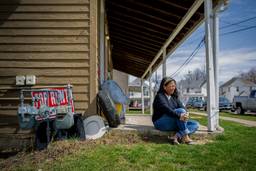
How did Democrats fail to pass cap-and-trade legislation in 2010 despite the relatively tame nature of the bill — and despite holding majorities in both houses of Congress? And what are the takeaways from that failure?
Those are the broad questions addressed in a January 2013 report by Theda Skocpol, a sociologist at Harvard. Skocpol argued that one major factor in the legislation’s defeat was the lack of a mobilized movement behind it. Supporters put too much faith and hope in the efforts of political elites (especially the president) and big-name environmental groups.
The opposition, meanwhile, tapped into the energy and organizing power of the ascendant Tea Party. Conservatives oppose cap-and-trade, which requires companies to purchase “pollution permits,” on general anti-regulation grounds.
The lesson? Building the grassroots base is vital to passing global warming legislation in the future.
“To counter fierce political opposition,” Skocpol writes, “reformers will have to build organizational networks across the country, and they will need to orchestrate sustained political efforts that stretch far beyond friendly Congressional offices, comfy board rooms, and posh retreats.”
Would a more energized movement have made a difference in 2010, though, given the GOP’s routine use of the filibuster to block legislation?
It seems doubtful. Democrats did have a filibuster-proof majority for a few months in 2010, but cap-and-trade was dead by then. The only hope for “getting anything big done,” as David Roberts of Grist writes, is a reformed political system: “The bill failed because, unlike every other democratic institution in the damn world, including state legislatures, juries, and the judge’s panel on American Idol, the U.S. Senate now requires a supermajority.”
Given that neither filibuster reform nor global warming legislation have a chance in the near-term, what’s the best path forward? Skocpol’s report provoked an array of answers to that question.
Environmental activist Bill McKibben agrees with Skocpol that continued movement-building is our best hope. “If the inside-the-Beltway groups had been able to turn to a real grassroots activist movement” when cap-and-trade was being debated, he wrote on Grist, “the outcome might have been different.”
McKibben supported the legislation, but he also notes the diminishing value of modest measures like cap-and-trade in the face of a problem as daunting as global warming: “At this point, having delayed action for so long, the easy baby steps are no longer helpful. A small price on carbon won’t get us as far as it would have a decade or two ago.”
Eric Biber, a professor of law at the University of California at Berkeley, responded to Skocpol by arguing that we shouldn’t discount the baby steps, since they’re the foundation for pushing through something more radical and transformational down the road. “Passing legislation that might be seen as small-bore, or only a piecemeal solution, may … make it easier for future victories,” Biber wrote in February on the blog Legal Planet.
If Biber’s argument holds true, environmental activists have some reasons for hope, given significant “baby steps” that are happening at the state level. California, for example, began enforcing its own cap-and-trade program earlier this year, in what could become a model for other states. An economist with the Environmental Defense Fund described it to National Journal as “one of the largest and boldest efforts to limit emissions on the planet.”
Meanwhile, 30 states have now implemented “renewable portfolio standards” — that is, laws requiring a certain share of the energy created by regulated utilities to come from renewable sources. Southern states have mostly resisted, but Texas has adopted one, as have Arizona, Kansas and North Carolina. Ohio’s standard is fairly typical: 25 percent alternative-energy by 2025, at least half of which must come from renewable sources.
There’s a related piece of good news as well: U.S. carbon emissions have fallen over the past several years, comparable to the rate they were expected to fall if cap-and-trade had actually passed. According to a recent report by Resources for the Future, one major factor in the decline has been policies and programs at the local and state level.
Truly confronting the problem of global warming will require much more ambitious action. Still, local progress is a hopeful sign that, in spite of a barely functioning U.S. Congress, the environmental movement hasn’t stalled. These baby steps — along with the more empowered movement that McKibben envisions — might actually lead to the kind of serious legislation that the scale of the problem demands.

I hope you found this article important. Before you leave, I want to ask you to consider supporting our work with a donation. In These Times needs readers like you to help sustain our mission. We don’t depend on—or want—corporate advertising or deep-pocketed billionaires to fund our journalism. We’re supported by you, the reader, so we can focus on covering the issues that matter most to the progressive movement without fear or compromise.
Our work isn’t hidden behind a paywall because of people like you who support our journalism. We want to keep it that way. If you value the work we do and the movements we cover, please consider donating to In These Times.








